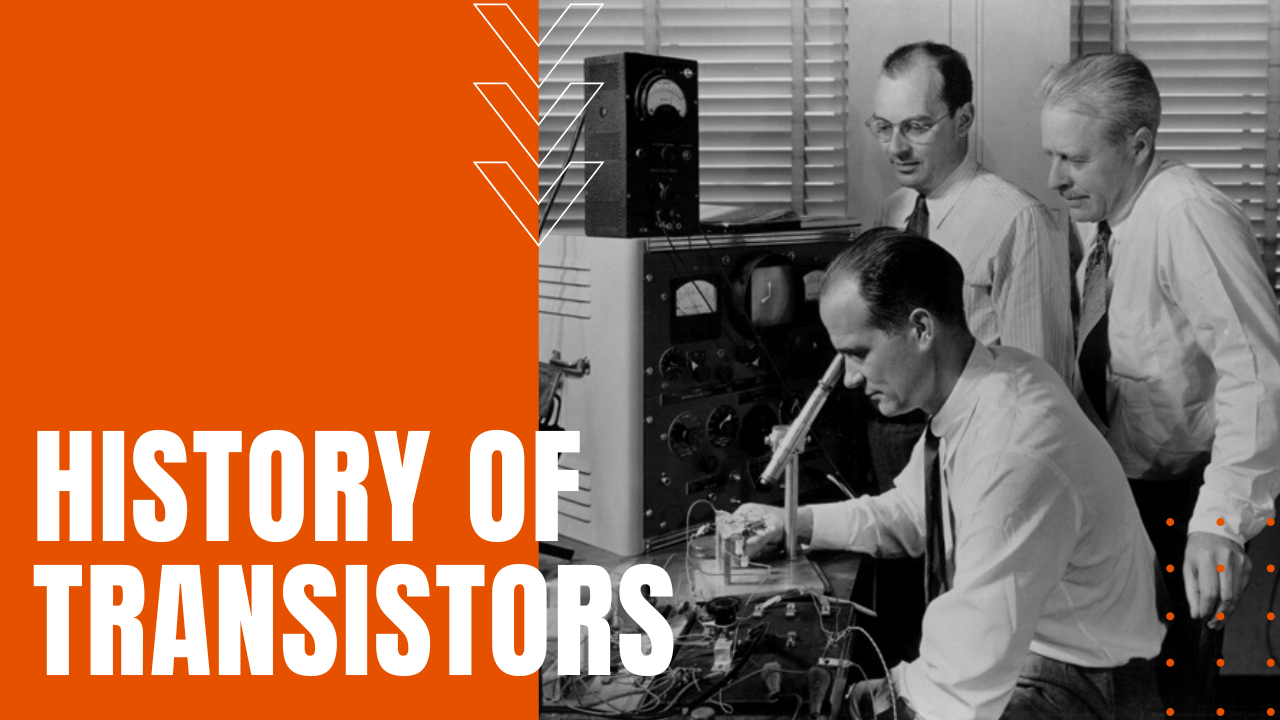History of Transistors

Due to the unreliability of vacuum tubes, after the end of World War Two, Bell Lab’s research director Mervin Kelly, cobbled together a team of scientists to develop a solid-state semiconductor or switch intended to replace the problematic electron tube.
Early Failed Attempts
Tapped to spearhead the project, young theoretician Bill Shockley drafted experimental physicist Walter Brattain and theoretical physicist John Bardeen, who after a number of failed attempts, on December 16th, 1947, the duo built the first point-contact transistor, made from strips of gold foil on a plastic triangle, pressed onto a slab of germanium. Shockley would improve upon their design with the creation of the sandwich transistor.
How They Work
A transistor’s three-layer structure contains either an n-type semiconductor layer between two p-type layers, knowns as a PNP configuration, or an NPN configuration made up of a single p-type layer between two n-type layers. No matter the type, the inner semiconductor layer acts as a control or gate electrode, allowing a small change in current or voltage at the semiconductor layer to produce a large, rapid change in the current passing through the component.
Major Breakthrough
Considered one of the most significant breakthroughs in the history of electronics and computing, solid-state transistors made devices both smaller and lighter than vacuum tube devices, consuming far less power, while increasing efficiency and speed, without the need for external heaters. While Japan’s Akio Morita, founder of Sony Electronics took an early lead in the mass-production of transistor radios and later other gadgets like the Sony Walkman, back in the states, when Shockley realized the future of transistors, he left Bell Labs to found Shockley Semiconductor in Palo Alto, while eight of his best and brightest scientists from Bell, soon known as the “traitorous eight,” formed Fairchild Semiconductor.
Founder of Intel
Two of the traitorous eight, Bob Noyce and Gordon Moore, would go on to form Intel Corporation, which would later be instrumental with others from Texas Instruments to co-invent the integrated circuit or microchip, making the transistor, an important stepping stone in the emergence of Silicon Valley.
